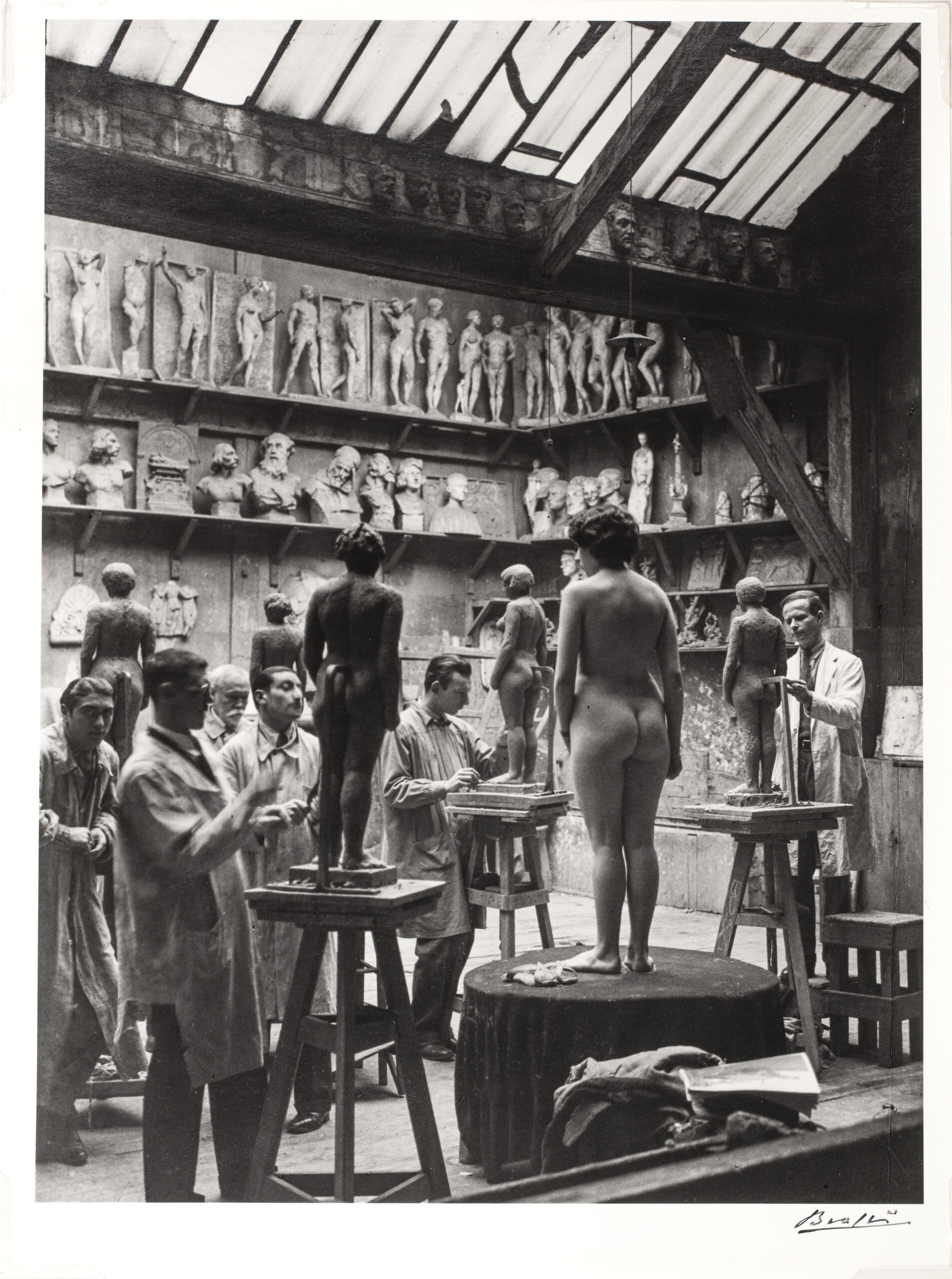Brassaï, whose original identity is Gyula Halász, was born on September 9, 1899, in Brassó, Transylvania, now Brașov in Romania. He was a polymath artist whose multiple talents—writer, sculptor, draftsman, and especially photographer—shaped the image of a mysterious and captivating Paris.
After studying at the Academy of Fine Arts in Budapest and spending time in Berlin, Brassaï realized his dream by settling in Paris in 1924. It was there that he adopted the pseudonym Brassaï, in homage to his hometown, and began to explore the nocturnal meanderings of the capital.
In the 1930s, as Paris awakened to surrealist art, Brassaï, without ever claiming to be part of that movement, established himself as a hunter of images. His unique vision of the world led him to capture unexplored scenes: the shadows of a bistro, the silhouettes of nighttime strollers, and the graffiti adorning the city walls. His book “Paris de Nuit,” published in 1932, became an essential reference, where each photograph reveals a mysterious, almost fantastical Paris, where light and shadow intertwine to create enchanting atmospheres.
Brassaï does not merely photograph the night; he makes it a character in its own right. “The night suggests, it does not show,” he said, and it is this suggestion that inspires him to immortalize the invisible. His fascination with graffiti, which he considers a “language of the wall,” makes him a pioneer. He sees these marks as a resonance of the past, an echo of human struggles and passions.
While asserting himself as a master of black and white, Brassaï also excelled in color experimentation. In 1957, during a stay in the United States, he took his first color photographs, which he later exhibited at the Rencontre gallery in Paris. His Cibachrome prints, innovative for the time, testify to his constant search for novelty.
Brassaï remained a multifaceted artist. As a writer, he published works that reflect his thoughts on art and society, ranging from “Graffiti” to “Conversations with Picasso,” where he explores the links between the visual and the literary. His interactions with iconic figures such as Pablo Picasso, Henry Miller, and André Breton enriched his creative universe.
Recognition for his work came over time. His documentary film “Tant qu’il y aura des bêtes,” awarded at the Cannes Film Festival, and his exhibitions at the Museum of Modern Art in New York solidified his place in art history. In 1978, he received the first Grand Prix national de la photographie, crowning a career rich in achievements.
Brassaï passed away on July 7, 1984, in Beaulieu-sur-Mer. Today, his works continue to capture the collective imagination, testifying to a bygone era where every street corner, every face, and every graffiti told a story.

Sign up to the newsletter and stay informed about our latest acquisitions and exhibitions:
© Galerie Rousset 2023